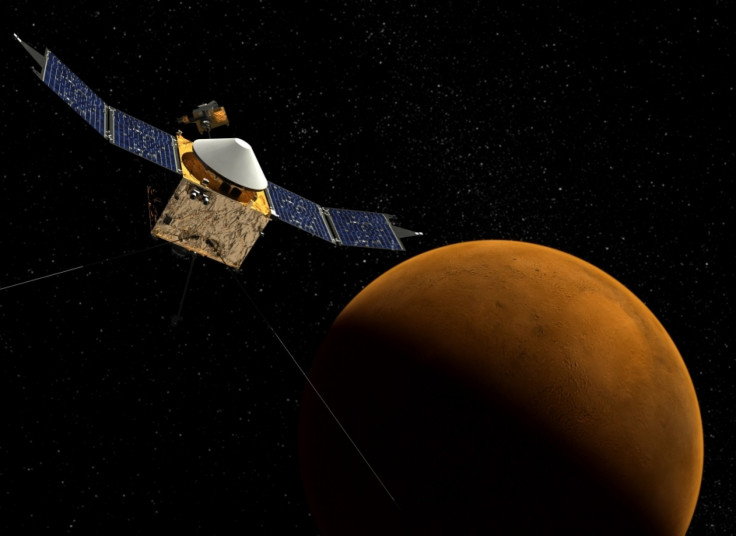NASA Prepares MAVEN To Reveal Mars’ History Of Climate Change As Indian Mission Also Eyes Martian Atmosphere

NASA is preparing its first spacecraft, which is expected to provide “unprecedented details” about Mars by examining the planet’s upper atmosphere, while India is also set to launch a probe to determine why the planet ended up being so different despite being the most similar one to Earth in our solar system.
The NASA spacecraft, named the Mars Atmosphere and Volatile Evolution mission, or MAVEN, is scheduled for lift-off at 1:28 p.m. EST on Nov. 18 from the Cape Canaveral Air Force Station in Florida. The mission will study the processes on Mars that are believed to be responsible for the loss of much of the planet’s atmosphere. Analysis of data collected during the mission will help planetary scientists to better understand the history of climate change on Mars, and provide additional information on whether life ever existed on the red planet.
“The MAVEN mission is a significant step toward unraveling the planetary puzzle about Mars' past and present environments,” John Grunsfeld, associate administrator for NASA's Science Mission Directorate in Washington, said in a statement. “The knowledge we gain will build on past and current missions examining Mars and will help inform future missions to send humans to Mars.”
According to NASA, MAVEN, weighing 5,410 pounds, will be launched aboard a United Launch Alliance Atlas V 401 rocket and the spacecraft will take 10 months to reach Mars' atmosphere and is expected to begin orbiting the planet on Sept. 22, 2014. During the mission, MAVEN will examine all of Mars' latitudes and will perform five deep dip maneuvers, descending to an altitude of 78 miles above Mars' surface. This will mark the lower boundary of the planet's upper atmosphere.
Meanwhile, India is also preparing to launch its own Mars Orbiter Mission, the country’s first interplanetary probe, on Nov. 5, from the Satish Dhawan Space Centre in Sriharikota in Andhra Pradesh on the country's eastern seaboard.
The mission, whose goals include a search for methane in the Martian atmosphere and a study of the planet's surface features and mineral composition, will be India’s second satellite launch after the successful 2008-2009 Chandrayaan-1 moon probe, which discovered water molecules in the lunar soil, Reuters reported.
© Copyright IBTimes 2024. All rights reserved.





















